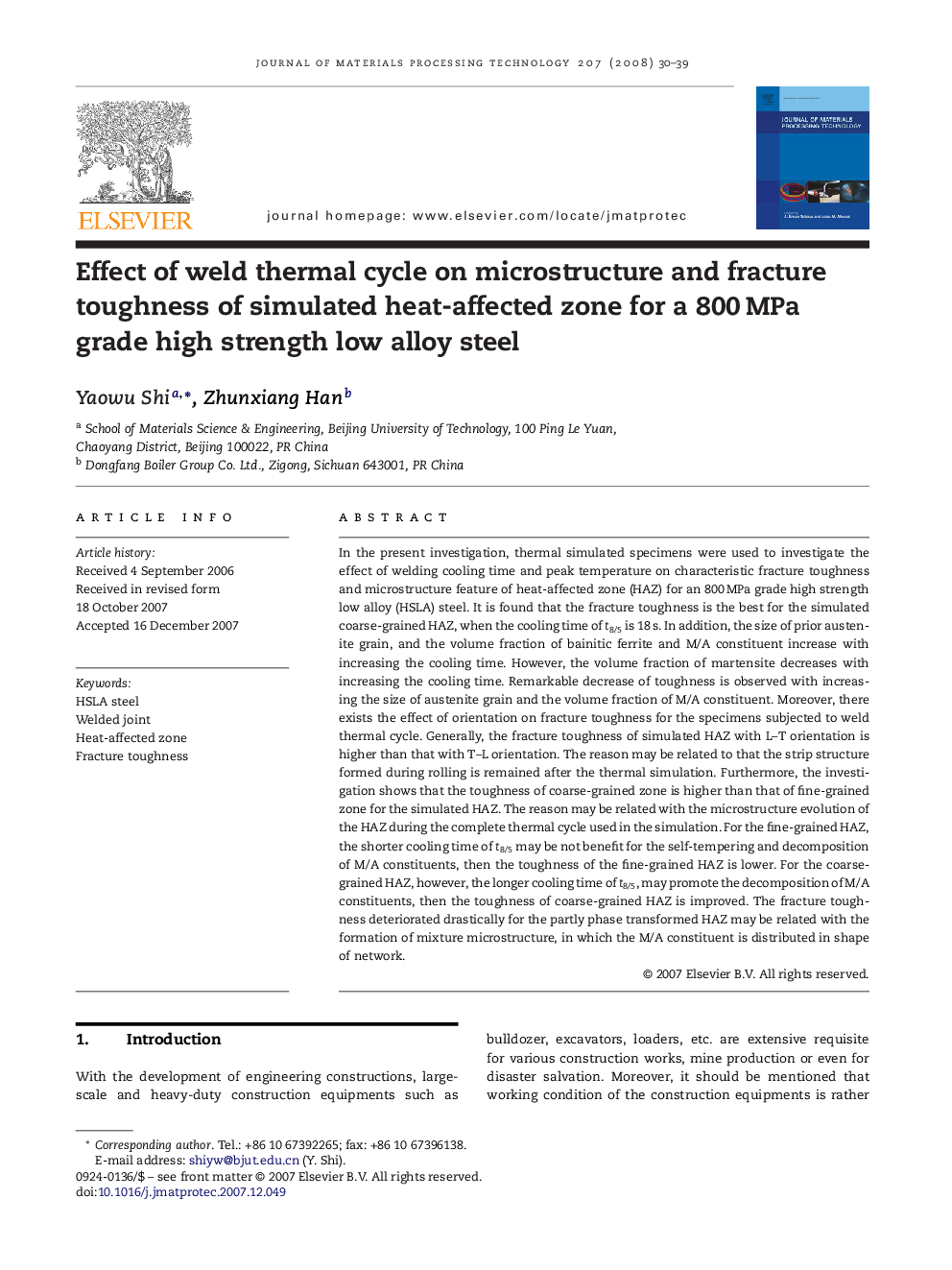| کد مقاله | کد نشریه | سال انتشار | مقاله انگلیسی | نسخه تمام متن |
|---|---|---|---|---|
| 791593 | 1466759 | 2008 | 10 صفحه PDF | دانلود رایگان |

In the present investigation, thermal simulated specimens were used to investigate the effect of welding cooling time and peak temperature on characteristic fracture toughness and microstructure feature of heat-affected zone (HAZ) for an 800 MPa grade high strength low alloy (HSLA) steel. It is found that the fracture toughness is the best for the simulated coarse-grained HAZ, when the cooling time of t8/5 is 18 s. In addition, the size of prior austenite grain, and the volume fraction of bainitic ferrite and M/A constituent increase with increasing the cooling time. However, the volume fraction of martensite decreases with increasing the cooling time. Remarkable decrease of toughness is observed with increasing the size of austenite grain and the volume fraction of M/A constituent. Moreover, there exists the effect of orientation on fracture toughness for the specimens subjected to weld thermal cycle. Generally, the fracture toughness of simulated HAZ with L–T orientation is higher than that with T–L orientation. The reason may be related to that the strip structure formed during rolling is remained after the thermal simulation. Furthermore, the investigation shows that the toughness of coarse-grained zone is higher than that of fine-grained zone for the simulated HAZ. The reason may be related with the microstructure evolution of the HAZ during the complete thermal cycle used in the simulation. For the fine-grained HAZ, the shorter cooling time of t8/5 may be not benefit for the self-tempering and decomposition of M/A constituents, then the toughness of the fine-grained HAZ is lower. For the coarse-grained HAZ, however, the longer cooling time of t8/5, may promote the decomposition of M/A constituents, then the toughness of coarse-grained HAZ is improved. The fracture toughness deteriorated drastically for the partly phase transformed HAZ may be related with the formation of mixture microstructure, in which the M/A constituent is distributed in shape of network.
Journal: Journal of Materials Processing Technology - Volume 207, Issues 1–3, 16 October 2008, Pages 30–39